February 2021
February 13, 2021
Diplomacy Rap
The US Ambassador to Vietnam, Daniel Kritenbrink, recently released a rap video, in collaboration with Vietnamese rapper Wowy, to mark the Lunar New Year Holiday.While it may be rap, it also fits into the genre of cringe.
Kritenbrink's rap starts soon after the one-minute mark.
Posted By: Alex - Sat Feb 13, 2021 -
Comments (0)
Category: Ineptness, Crudity, Talentlessness, Kitsch, and Bad Art, Music, Politics
Buster Makes Room for His Mama at the Bargain Counter
Actually, it's Tige who deserves all the credit.
Posted By: Paul - Sat Feb 13, 2021 -
Comments (0)
Category: Movies, Shopping, Comics, Children, Dogs, 1900s
February 12, 2021
Miss Welder
Between 1951 and 1954, the National Eutectic Welders' Club annually awarded the title of "Miss Welder". The winner was supposed to represent the "girl we would most like to weld with." The club also expressed its hope that Miss Welder would "inspire women throughout the nation to join the ranks of the labor force so vitally needed for America's defense effort."The winners included some well-known names. In particular, Sophia Loren (1954). Missing from the list below is Miss Welder of 1953, Barbara Nichols, for whom I couldn't find an image.
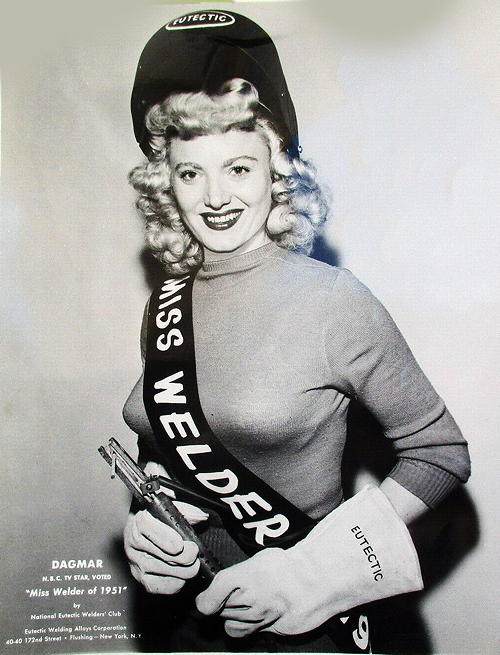
1951: Dagmar
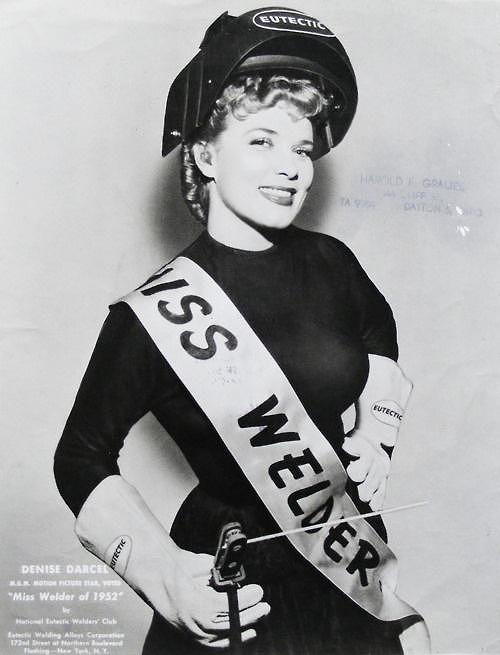
1952: Denise Darcel
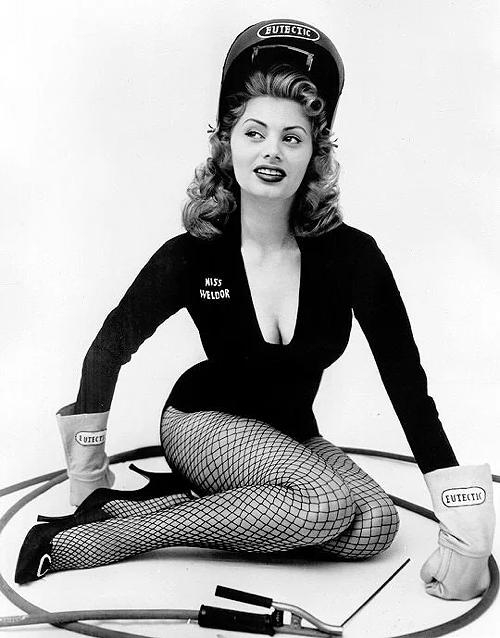
1954: Sophia Loren
Posted By: Alex - Fri Feb 12, 2021 -
Comments (2)
Category: Awards, Prizes, Competitions and Contests, Beauty, Ugliness and Other Aesthetic Issues, 1950s
The Waffle Party
With all this talk of rogue Republicans forming a new party, I hope they choose a name as evocative as that of Canada's The Waffle.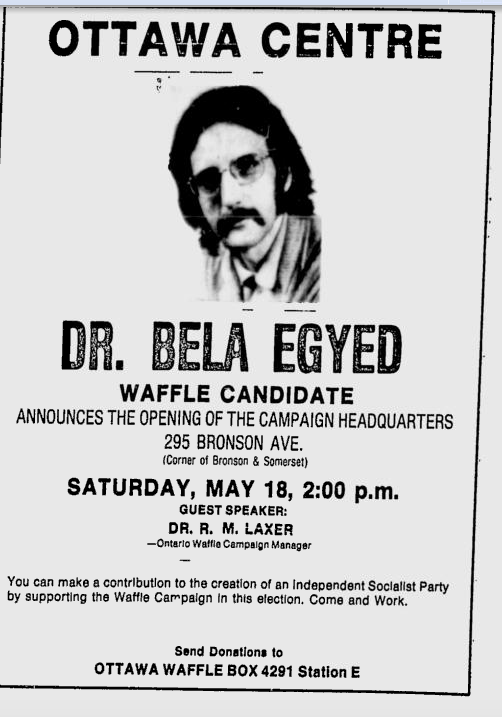
Source.
Posted By: Paul - Fri Feb 12, 2021 -
Comments (1)
Category: Odd Names, Politics, 1960s, 1970s, North America
February 11, 2021
The Soot-Bag System
In the early days of rail travel, people who had the financial means to travel first class often went third-class, to save some money. To discourage this practice some British railway companies adopted the "soot-bag system". They would hire a chimney sweep to travel in the third-class carriage and shake out the contents of his bag, getting everyone dirty. At other times, pigs and sheep were transported in the third-class carriages. The idea was to make third-class travel as unpleasant as possible.I figure that the modern-day equivalent in the airline industry is the "no-legroom system" and the "only-a-bag-of-peanuts-on-a-five-hour-flight system".
But another and apparently unforeseen consequence [of the introduction of third-class railway carriages] followed, that "certain persons in superior positions" were base enough to travel in third-class carriages. If universal indignation could have crushed these miserable creatures, they would soon have succumbed; but they persevered, even in spite of the "artificial inconveniences" specially invented to deter them. Not but what these inconveniences were serious enough.
The management of the Manchester and Leeds Railway adopted what was known as the "soot-bag system." Sweeps were hired to enter a third-class carriage which had been specially kept for the benefit of "persons in superior position," and then shake out the contents of their bags. At other times, if a correspondent of the Railway Times can be trusted, "sheep and sometimes pigs were made the substitutes for sweeps."
Even then some persons—if report said true some bailies of the City of Glasgow—persevered in their evil courses. But their conduct was strongly reprehended by all respectable persons.
Posted By: Alex - Thu Feb 11, 2021 -
Comments (5)
Category: Trains and Other Vehicles on Rails, Transportation, Nineteenth Century
Robo Show and Flower Planet
Two features from the 1990 World's Fair in Japan.The opening few minutes are a press release for the company that created the exhibit. "Robo Show" begins at the 5:40 mark, and "Flower Planet" at minute 13:00. State-of-the-art stuff for thirty years ago.
Posted By: Paul - Thu Feb 11, 2021 -
Comments (0)
Category: Fairs, Amusement Parks, and Resorts, Robots, Cartoons, Special Effects, 1990s, Asia
February 10, 2021
Operation Cornflakes
1945: Toward the end of World War II, the American OSS cooked up a scheme to use postage stamps to demoralize the German people. The idea was to create fake 12 Pfennig stamps on which Hitler's profile was replaced by an image of Hitler with his jaw eaten away.The Operation had no discernible effect on German morale. But it's a favorite topic among stamp collectors, who are flattered to think that anyone in the OSS ever imagined that stamps might have had such an effect.
More info: wikipedia

Posted By: Alex - Wed Feb 10, 2021 -
Comments (1)
Category: War, Spies and Intelligence Services, 1940s, Stamps
Follies of the Madmen #499
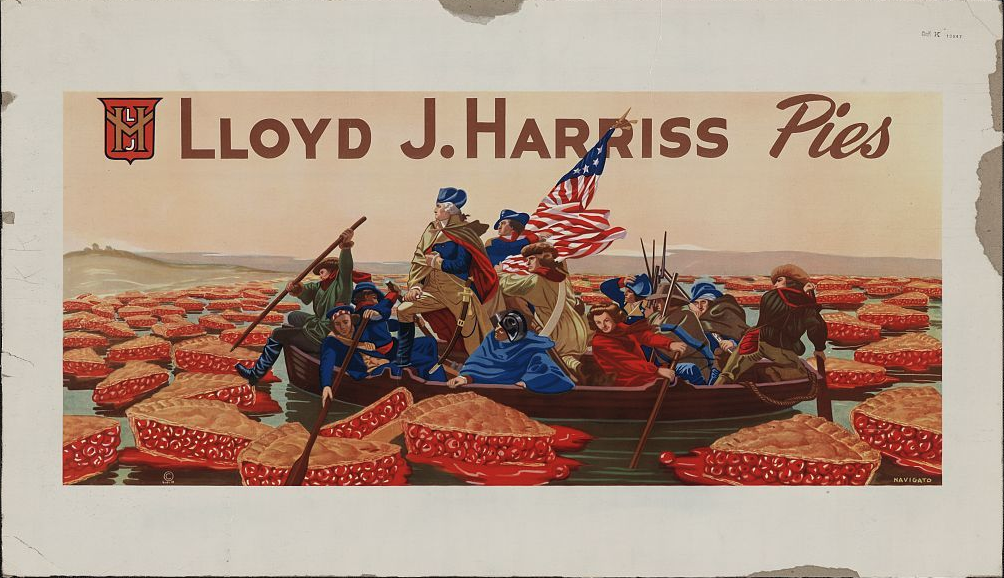
Source.
Posted By: Paul - Wed Feb 10, 2021 -
Comments (1)
Category: Business, Advertising, Food, History, Historical Figure, 1940s
February 9, 2021
The C-3PO ‘Golden Rod’ Card
In 1977, Topps issued a set of Star Wars trading cards. The set included one card that would, arguably, become the most infamous card it ever printed. This was the so-called C-3PO 'golden rod' card — so called because it seems to show C-3PO in a state of prominent arousal.
Mel magazine recently posted an article which explores the history of this card. The article makes a couple of interesting points:
First, Topps not only really did issue this card... it printed a lot of them. This isn't a rare card.
Second (and to me this is the most remarkable thing), no one involved in the creation of the card noticed its most salient feature until after it had been released and word started to spread among card collectors.
Finally, there's no evidence that the card was the work of a rogue artist. The most compelling theory about what happened is that a panel on the side of C-3PO's armor plating must have accidentally fallen open, and was in exactly the right position to create the illusion of robotic arousal. And then, for whatever reason, Topps selected that image, out of all the possible ones, to print.
Eventually Topps released a corrected version of the card (below). Apparently this corrected version is rarer, and more collectible, than the original. Though, ideally, a collector would want to have both.

Posted By: Alex - Tue Feb 09, 2021 -
Comments (0)
Category: Movies, Robots, Collectors, 1970s
The Punched Tape of Life
The first 70 seconds are abstract, but then come visuals that--tell a story?View six more of his films here.
His Wikipedia page.
Posted By: Paul - Tue Feb 09, 2021 -
Comments (1)
Category: Movies, Music, Avant Garde, 1960s, Europe
| Get WU Posts by Email | |
|---|---|

| Who We Are |
|---|
| Alex Boese Alex is the creator and curator of the Museum of Hoaxes. He's also the author of various weird, non-fiction books such as Elephants on Acid. Paul Di Filippo Paul has been paid to put weird ideas into fictional form for over thirty years, in his career as a noted science fiction writer. He has recently begun blogging on many curious topics with three fellow writers at The Inferior 4+1. Chuck Shepherd Chuck is the purveyor of News of the Weird, the syndicated column which for decades has set the gold-standard for reporting on oddities and the bizarre. Our banner was drawn by the legendary underground cartoonist Rick Altergott. Contact Us |

